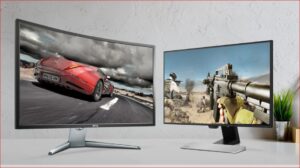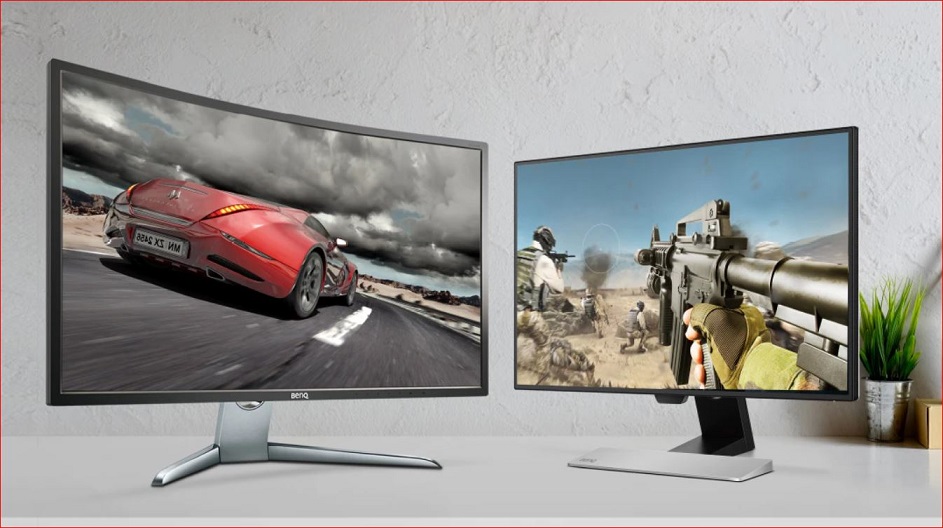When choosing a new computer monitor, one key decision is curved versus flat display. Curved monitors wrap slightly around for a more immersive experience, while flat panels take a more traditional approach. Which is right for your needs? Let’s examine some key contrasts.

Viewing Angle Advantages Curved screens provide boosted viewing angles over flat versions. The subtle wrap-around increases visible display real estate from the side at your desk. You can see more content clearly without distortion based on head positioning.
Immersion Differences
That wrap design also creates a more engrossing, immersive feel from curved devices. It fills more of your central and peripheral field of vision for a captivating gaming or video setup. Flattens monitors offer a more classic straight-on perspective.
Aesthetic Choices Curved screens exude contemporary style lending a sleek,premium look to any desk. The curved edge and thinner bezel improves overall monitor aesthetics. Flat panel monitors take on a more basic, all-business appearance.
Spec Considerations
Flat panels can support higher peak resolutions and aspect ratios. Curved displays top out around 3440 x 1440. When evaluating specs like response time and refresh rate, there is little intrinsic advantage to curveture itself.
At the end of the day curve appeal comes down to user preference. If you value engrossing experiences for gaming and video watching, a curve makes sense. Professionals needing precise imagery or maximized screen real estate might prefer flat functionality. Choose what brings you joy!
Which style monitor fills your needs – curved or flat? Share your favorites for work and play!

